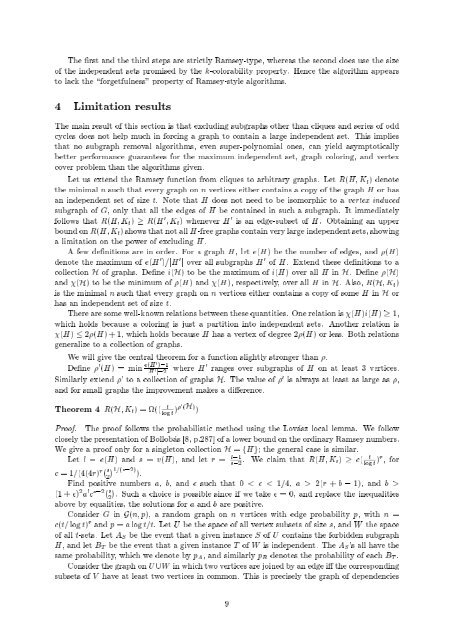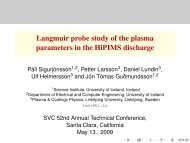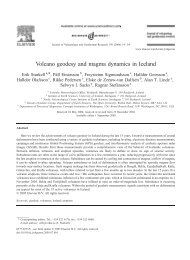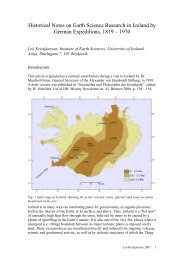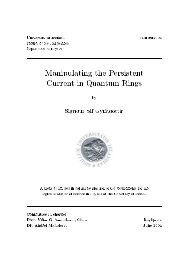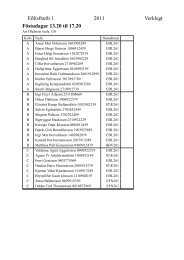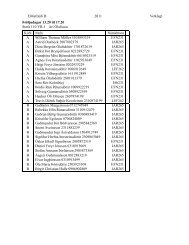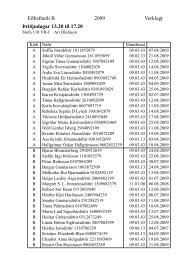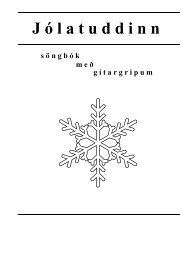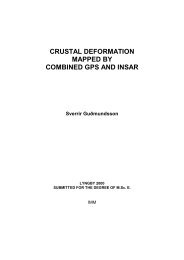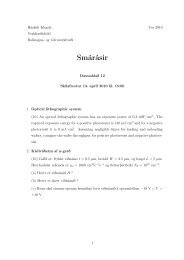Approximating Maximum Independent Sets by Excluding Subgraphs 1
Approximating Maximum Independent Sets by Excluding Subgraphs 1
Approximating Maximum Independent Sets by Excluding Subgraphs 1
Create successful ePaper yourself
Turn your PDF publications into a flip-book with our unique Google optimized e-Paper software.
The rst and the third steps are strictly Ramsey-type, whereas the second does use the sizeof the independent sets promised <strong>by</strong> the k-colorability property. Hence the algorithm appearsto lack the \forgetfulness" property of Ramsey-style algorithms.4 Limitation resultsThe main result of this section is that excluding subgraphs other than cliques and series of oddcycles does not help much in forcing a graph to contain a large independent set. This impliesthat no subgraph removal algorithms, even super-polynomial ones, can yield asymptoticallybetter performance guarantees for the maximum independent set, graph coloring, and vertexcover problem than the algorithms given.Let us extend the Ramsey function from cliques to arbitrary graphs. Let R(H; K t ) denotethe minimal n such that every graph on n vertices either contains a copy of the graph H or hasan independent set of size t. Note that H does not need to be isomorphic to a vertex inducedsubgraph of G, only that all the edges of H be contained in such a subgraph. It immediatelyfollows that R(H; K t ) R(H 0 ; K t ) whenever H 0 is an edge-subset of H. Obtaining an upperbound on R(H; K t ) shows that not all H-free graphs contain very large independent sets, showinga limitation on the power of excluding H.A few denitions are in order. For a graph H, let e(H) be the number of edges, and (H)denote the maximum of e(H 0 )=jH 0 j over all subgraphs H 0 of H. Extend these denitions to acollection H of graphs. Dene i(H) to be the maximum of i(H) over all H in H. Dene (H)and (H) to be the minimum of (H) and (H), respectively, over all H in H. Also, R(H; K t )is the minimal n such that every graph on n vertices either contains a copy of some H in H orhas an independent set of size t.There are some well-known relations between these quantities. One relation is (H)i(H) 1,which holds because a coloring is just a partition into independent sets. Another relation is(H) 2(H) + 1, which holds because H has a vertex of degree 2(H) or less. Both relationsgeneralize to a collection of graphs.We will give the central theorem for a function slightly stronger than .Dene 0 (H) = min e(H 0 )01jHwhere H 0 ranges over subgraphs of H on at least 3 vertices.0 j02Similarly extend 0 to a collection of graphs H. The value of 0 is always at least as large as ,and for small graphs the improvement makes a dierence.Theorem 4 R(H; K t ) = (( tlog t )0 (H))Proof. The proof follows the probabilistic method using the Lovasz local lemma. We followclosely the presentation of Bollobas [8, p.287] of a lower bound on the ordinary Ramsey numbers.We give a proof only for a singleton collection H = fHg; the general case is similar.Let l = e(H) and s = v(H), and let r = l01 . We claim that R(H; K s02 t) c( tlog t )r , forc = 1=(4(4r) r0 s 1=(s02)21).Find positive numbers a, b, and such that 0 < < 1=4, a > 2(r + b 0 1), and b >(1 + ) 2 a l c s020 s21 . Such a choice is possible since if we take = 0, and replace the inequalitiesabove <strong>by</strong> equalities, the solutions for a and b are positive.Consider G in G(n; p), a random graph on n vertices with edge probability p, with n =c(t= log t) r and p = a log t=t. Let U be the space of all vertex subsets of size s, and W the spaceof all t-sets. Let A S be the event that a given instance S of U contains the forbidden subgraphH, and let B T be the event that a given instance T of W is independent. The A S 's all have thesame probability, which we denote <strong>by</strong> p A , and similarly p B denotes the probability of each B T .Consider the graph on U [W in which two vertices are joined <strong>by</strong> an edge i the correspondingsubsets of V have at least two vertices in common. This is precisely the graph of dependencies9


